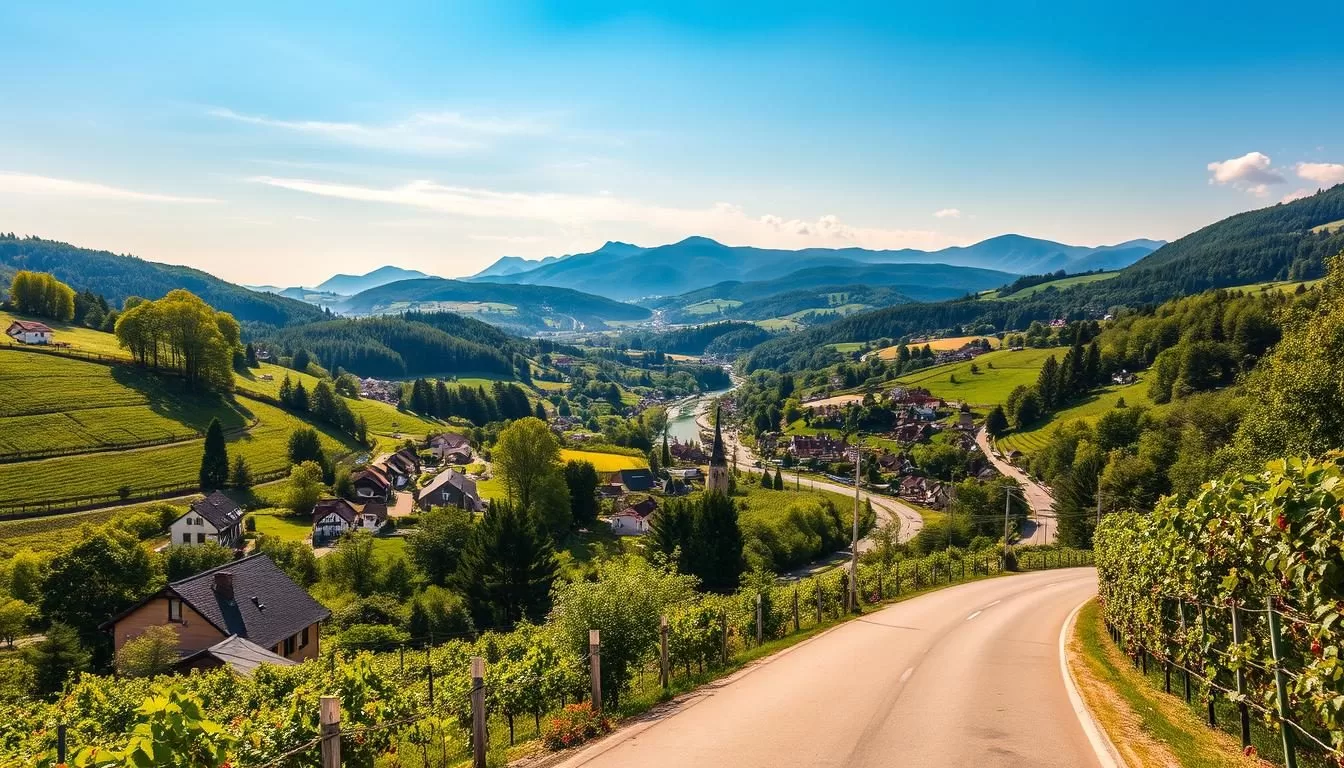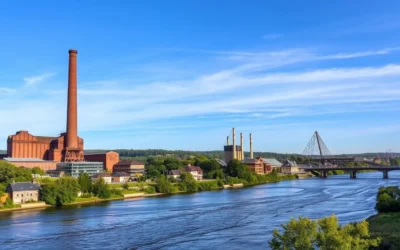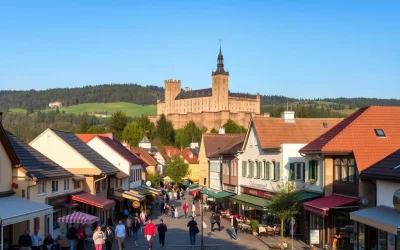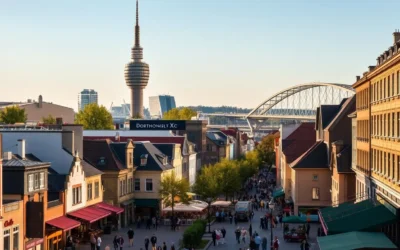✓ Accommodations✓ Flights✓ Rental Cars
Located in the heart of Western Europe, this german state is a fascinating blend of history, culture, and tradition. Established in 1946, it has grown into a region known for its vibrant communities and diverse heritage. One of its most defining features is its unique language landscape, which reflects its rich past and present.
Here, you’ll find a mix of dialects and linguistic traditions that shape daily life. The widely spoken tongues in this area are not just a means of communication but also a bridge to its cultural identity. Whether you’re exploring its charming villages or bustling cities, the language you hear tells a story of unity and diversity.
This introduction sets the stage for understanding how rhineland rhineland-palatinate uses its linguistic heritage to connect people and preserve its legacy. Let’s dive deeper into what makes this region so special.
Discovering Rhineland-Palatinate’s Rich Language Culture
Language plays a key role in shaping the community and heritage of this region. The state’s linguistic traditions are deeply rooted in its history, creating a unique blend of dialects and customs. These traditions are not just about communication but also about preserving cultural identity.
Education plays a vital role in maintaining these linguistic practices. Schools in the region emphasize both formal language and local dialects. This approach helps younger generations connect with their heritage while preparing them for broader opportunities.
The population trends also influence the language landscape. Diverse communities bring their own dialects and traditions, enriching the cultural fabric. This mix creates a vibrant environment where different linguistic styles coexist.
Below is a table highlighting key aspects of the region’s language culture:
| Aspect | Details |
|---|---|
| Dialects | Local variations like Moselle Franconian and Palatine German |
| Education | Schools teach Standard German alongside regional dialects |
| Population | Diverse communities contribute to linguistic diversity |
| Cultural Heritage | Festivals and traditions celebrate local dialects |
This state is a perfect example of how language can unite people while celebrating diversity. Whether through education or everyday interactions, the region’s linguistic culture continues to thrive.
Historical Roots of Regional Languages
Understanding the region’s language roots requires a look into its past. The history of this area is marked by significant events that shaped its linguistic landscape. From ancient traditions to modern dialects, every century has left its mark.
The Formation of the State Post-World War II
After World War II, the region underwent major political and social changes. In 1946, the state was officially formed, bringing together diverse communities. This unification played a key role in shaping the language culture.
Debates in cities like Koblenz and Mainz highlighted the importance of preserving local dialects. These discussions laid the foundation for a linguistic identity that continues to thrive today.
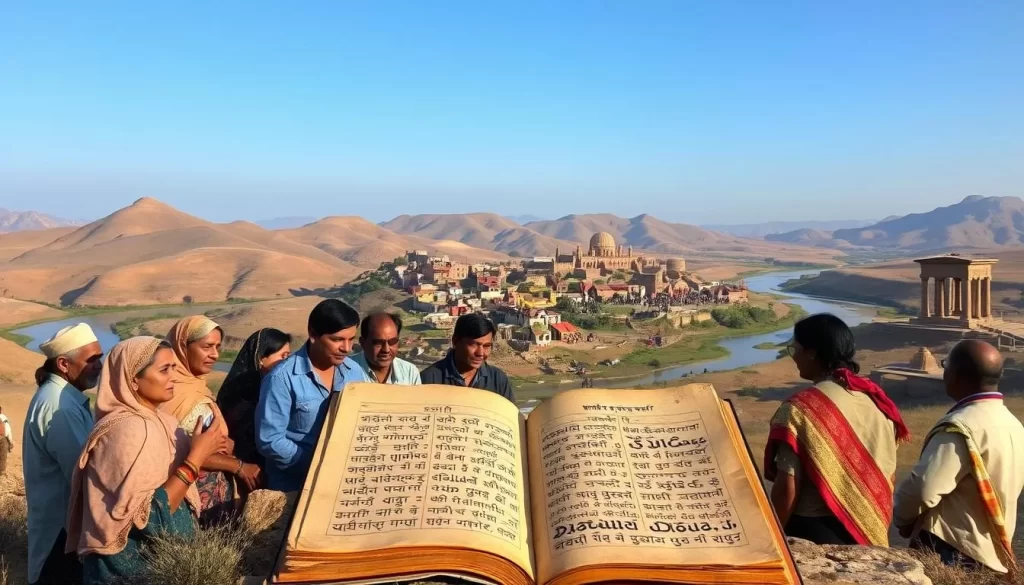
Evolution of Language Through Centuries
Over the past century, the region’s dialects have evolved significantly. Influences from neighboring areas and global events have enriched the linguistic diversity. Each term and phrase tells a story of adaptation and resilience.
Key historical milestones, such as population shifts and cultural exchanges, have further shaped the way people communicate. Today, these dialects are a testament to the region’s rich history.
Official Language and Its Standardization
Standard German serves as the backbone of communication in this region. It is the official language, ensuring clarity and unity across diverse communities. This standard form is essential for education, administration, and media.
The government played a key role in shaping this linguistic norm. Policies implemented in the federal state aimed to create a unified language system. These efforts date back to historical milestones, including Martin Luther’s Bible translation, which laid the groundwork for modern German.
Understanding Standard German in the Region
The origin of these practices traces back to the need for a common language. Local dialects, while rich and varied, often differ significantly. Standard German bridges these gaps, allowing seamless interaction.
Here’s how the government and federal state contributed to this standardization:
- Educational reforms prioritized teaching the standard form.
- Administrative decisions ensured its use in official documents.
- Media and broadcasting adopted it for wider reach.
Today, this standard language coexists with local dialects, enriching the cultural tapestry. It reflects the region’s ability to balance tradition with modernity.
Widely Spoken Dialects and Local Variations
The linguistic diversity of this area is a reflection of its rich cultural tapestry. From the rolling hills to bustling towns, every place has its own unique way of speaking. These dialects are more than just words; they’re a gateway to tradition and identity.
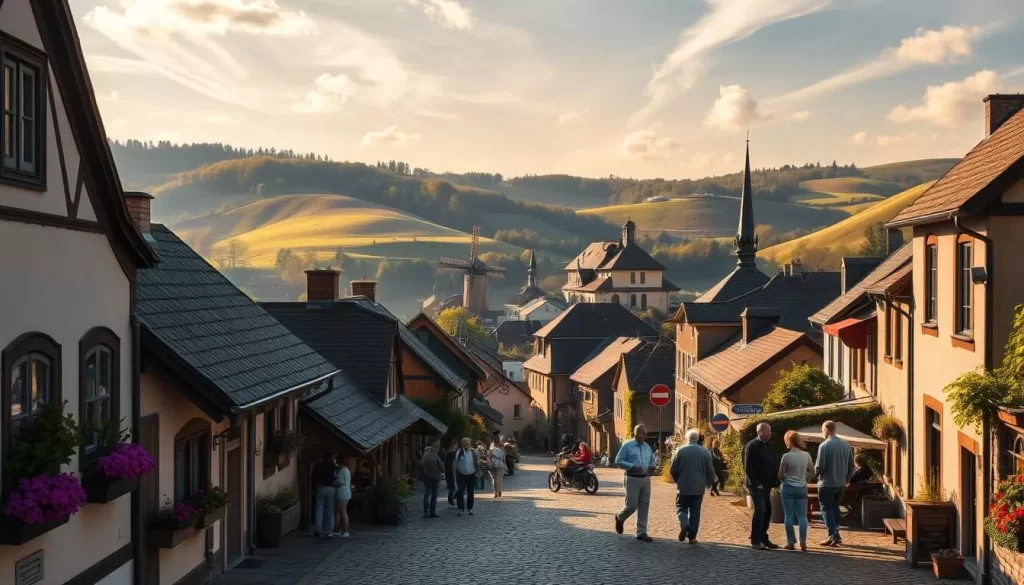
Dialects, Accents, and Pronunciation Nuances
Local accents and pronunciation nuances add depth to the region’s linguistic mosaic. For example, the Palatine dialect is known for its melodic tone and distinct vocabulary. In other areas, you’ll find variations like Moselle Franconian, which carries its own unique charm.
These differences often stem from historical influences and geographic isolation. Each group within the region has preserved its speech patterns, creating a vibrant blend of sounds. Whether it’s the soft “g” in one area or the rolling “r” in another, these details make every conversation special.
| Dialect | Characteristics |
|---|---|
| Palatine | Melodic tone, unique vocabulary |
| Moselle Franconian | Soft consonants, regional phrases |
| Rhenish Franconian | Distinct rhythm, historical roots |
These dialects coexist harmoniously with standard German, enriching everyday communication. They remind us that language is not just a tool but a living, breathing part of culture.
Influences of History and the Roman Empire on Language
The Roman Empire’s legacy continues to shape the language landscape of this region. Its influence can be seen in the vocabulary and dialects that have evolved over centuries. The remnants of this period are still evident in everyday speech.
During different historical periods, language boundaries were often defined by territorial borders. The Roman Empire established key trade routes and administrative centers, which left a lasting impact on local dialects. These changes laid the foundation for the linguistic diversity seen today.
Territorial shifts over time also played a significant role. As borders changed, so did the way people communicated. The border regions often became melting pots of different linguistic traditions. This blending created unique dialects that reflect the area’s complex history.
Here are some key ways history shaped the region’s language:
- Roman administrative terms integrated into local vocabulary.
- Territorial changes introduced new linguistic influences.
- Border areas developed hybrid dialects.
Understanding these historical influences helps you appreciate the rich linguistic heritage of this region. The interplay between the Roman Empire, territorial borders, and evolving dialects continues to shape how people communicate today.
Impact of Government and Education on Language Preservation
Education and government policies play a vital role in preserving regional dialects. Through structured programs and public initiatives, local languages remain vibrant and relevant. This collaboration ensures that linguistic traditions are passed down to future generations.
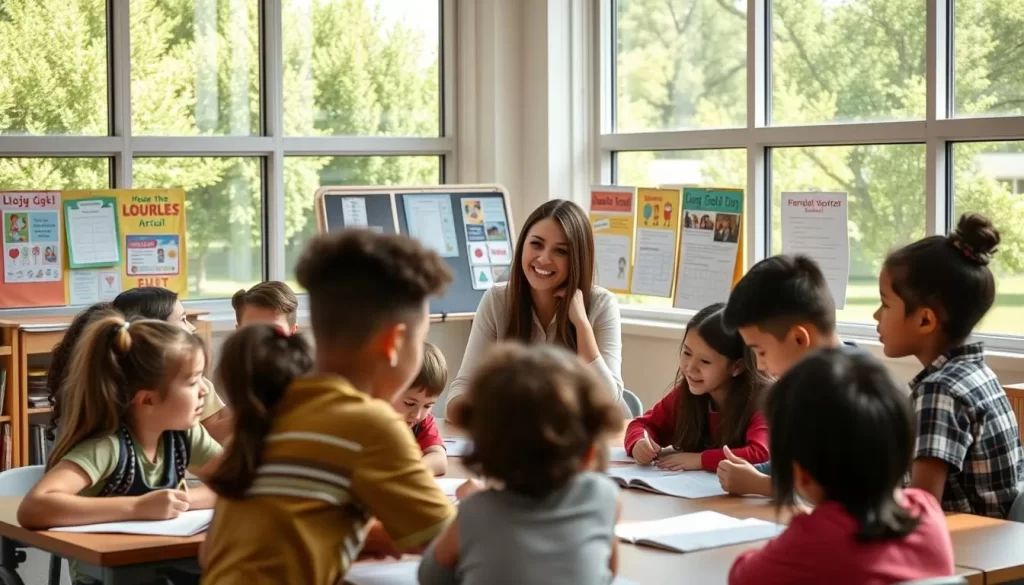
Policies Shaping Language Use in Schools and Public Life
Schools are at the forefront of language preservation. Many educational institutions integrate regional dialects into their curricula. This approach helps students connect with their cultural roots while mastering standard forms of communication.
At the district level, policies are implemented to support indigenous languages. Local governments allocate resources for language programs, ensuring their sustainability. These efforts are often community-driven, reflecting the collective commitment to preserving heritage.
Government funding has also been instrumental. For example, recent initiatives have provided millions of euros to promote regional languages. This financial support enables the development of educational materials and training programs for teachers.
Here’s how community initiatives and government policies intersect:
- Schools teach both standard and regional dialects.
- Districts implement policies to sustain language use.
- Government funding supports educational and cultural programs.
These combined efforts demonstrate the long-term impact of consistent language education. By nurturing linguistic diversity, the region ensures its cultural legacy remains alive and well.
Cultural Significance of Language Among Local Communities
Language is more than just words—it’s a reflection of identity and pride in every community. In this area, dialects and linguistic traditions are deeply woven into daily life. They connect people to their roots and create a sense of belonging.
In every city, you’ll find unique ways of speaking that reflect local history and culture. These dialects are not just about communication; they’re a way to preserve heritage. Whether in bustling urban centers or quiet rural towns, language fosters a shared identity.
For many, speaking a local dialect makes a house feel like home. It’s a way to connect with neighbors and celebrate shared traditions. From festivals to casual conversations, language strengthens community bonds.
Here’s how language shapes cultural identity:
- It preserves local history and traditions.
- It fosters a sense of pride and belonging.
- It brings people together in everyday interactions.
Preserving these linguistic traditions is essential. They are a cultural asset that enriches both urban and rural life. By valuing local dialects, communities ensure their heritage continues to thrive.
As you explore this area, you’ll notice how language unites people. It’s a reminder that every word carries a story, and every conversation strengthens the community spirit.
Economic and Tourism Implications of a Diverse Language Scene
The economic landscape of this region thrives on its rich linguistic diversity. A multilingual environment not only enhances cultural identity but also drives growth in key sectors like tourism and trade. Visitors from across the country are drawn to the unique charm of its german city centers, where language plays a pivotal role in shaping experiences.
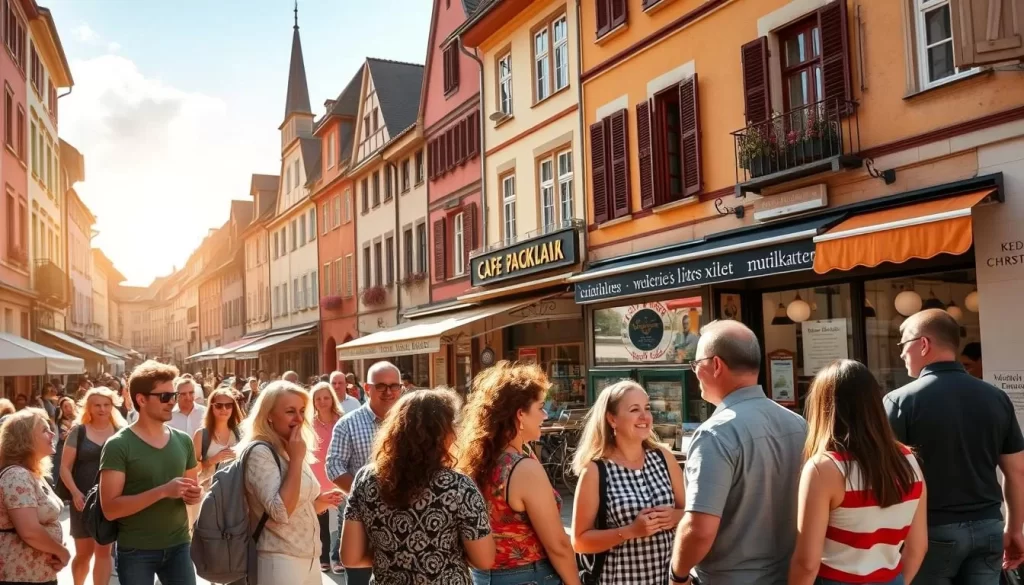
Tourism is a major contributor to the local economy, with over 3 million international visitors annually. This influx generates an estimated €5 billion each year, showcasing the economic power of cultural diversity. Language skills are highly valued, with 40% of employers in the tourism sector preferring multilingual employees.
Businesses also benefit from this linguistic richness. A multilingual workforce opens doors to global markets, fostering innovation and collaboration. Over 50 language schools and cultural institutions in the region further support this dynamic environment, promoting learning and exchange.
Here’s how linguistic diversity drives economic and tourism growth:
- Attracts international visitors with unique cultural experiences.
- Enhances trade opportunities through multilingual communication.
- Creates jobs in tourism, education, and language services.
This region’s ability to embrace its linguistic heritage while fostering economic growth is a testament to its resilience and adaptability. Whether you’re a visitor or a business owner, the opportunities here are as diverse as the languages spoken.
Language in Media and Everyday Communication
Media and communication platforms play a vital role in shaping how people connect and share ideas today. From traditional broadcasting to digital innovations, language remains at the heart of these interactions. It’s fascinating to see how media practices have evolved over time, reflecting broader changes in society.
Broadcasting, Digital Media, and Public Announcements
In the world of broadcasting, language serves as a bridge between content creators and audiences. Whether it’s a radio show or a TV program, the choice of words and tone can make a significant difference. Digital media has further transformed this landscape, allowing for more interactive and personalized communication.
Public announcements are another area where language plays a crucial role. Clear and concise messaging ensures that important information reaches everyone effectively. This is especially true in emergencies, where every word counts.
Here’s a breakdown of how language is utilized across different media platforms:
| Platform | Language Use |
|---|---|
| Broadcasting | Formal tone, standardized vocabulary |
| Digital Media | Interactive, informal, and engaging |
| Public Announcements | Clear, concise, and accessible |
These changes signal the end of outdated language forms, paving the way for more inclusive and effective communication. As media continues to evolve, so does the way we use language to connect with one another.
Understanding these transformations helps you appreciate the dynamic role of language in the modern world. Whether through a tweet or a TV broadcast, every word carries the potential to inform, inspire, and unite.
Engaging With Local Traditions and Culinary Linguistics
Exploring the culinary traditions of Baden-Württemberg reveals a deep connection between food and language. Here, every dish carries a story, blending flavors with regional dialects. This unique interplay makes dining an immersive cultural experience.
In this part of the world, local recipes often have names rooted in dialects. For example, the famous “Maultaschen” (Swabian dumplings) is a term that reflects the region’s linguistic heritage. These dishes are more than just meals; they’re a way to preserve history and identity.
Language also shapes how food is prepared and shared. In Baden-Württemberg, traditional meals like “Spätzle” (egg noodles) are often served during family gatherings. These moments highlight how food and language bring people together, creating a sense of community.
Here’s a glimpse into how culinary traditions and dialects intersect:
| Dish | Dialect Name | Cultural Significance |
|---|---|---|
| Maultaschen | Swabian Dumplings | Symbolizes resourcefulness and tradition |
| Spätzle | Egg Noodles | Staple of family meals and celebrations |
| Bretzel | Pretzel | Represents craftsmanship and regional pride |
These traditions are a part of everyday life, enriching the cultural fabric of the region. By understanding the linguistic roots of these dishes, you gain a deeper appreciation for their significance. To learn more about how traditions enhance language learning, check out this guide.
Exploring Rhineland-Palatinate, Germany: Official and widely spoken languages
The linguistic identity of this state reflects its rich history and cultural depth. Officially recognized languages play a key role in shaping daily life and administrative practices. Standard German is the primary language, ensuring clarity and unity across diverse communities.
Naming conventions in the state rhineland rhineland-palatinate carry historical significance. Many place names trace their origins to ancient traditions and regional dialects. For example, the north rhine area has names that reflect its unique heritage and geographical features.
Local government practices underscore the commitment to linguistic heritage. Policies are in place to preserve regional dialects while promoting standard forms of communication. This balance ensures that cultural identity remains intact while fostering broader connections.
Here’s how language defines regional identity:
- It preserves historical and cultural traditions.
- It fosters a sense of pride and belonging among residents.
- It bridges the gap between local and global communication.
Understanding the importance of language in this state rhineland rhineland-palatinate helps you appreciate its cultural richness. Whether through official documents or everyday conversations, language remains a cornerstone of regional identity.
Tips for Learning and Appreciating Regional German
Exploring regional dialects can be a rewarding way to connect with local culture. Whether you’re a visitor or a language enthusiast, engaging with local inhabitants offers a unique window into authentic speech patterns. Here’s how you can dive deeper into the linguistic landscape.
Practical Advice for Visitors and Language Enthusiasts
Start by interacting with local inhabitants. Strike up conversations in markets, cafes, or community events. Many locals appreciate the effort and are happy to share their dialect. This hands-on approach helps you learn genuine phrases and pronunciation.
For a broader experience, explore neighboring areas like north rhine rhine-westphalia. Each region has its own linguistic flavor, and comparing dialects can deepen your understanding. Visiting cultural festivals or language workshops is another great way to immerse yourself.
- Use language apps to familiarize yourself with basic phrases.
- Attend local events where dialects are spoken naturally.
- Practice with native speakers to refine your accent.
- Visit museums or cultural centers that highlight linguistic heritage.
Curiosity is your best tool. Ask questions about the history and meaning behind certain words. This not only helps you learn but also fosters meaningful connections with the community.
| Activity | Benefit |
|---|---|
| Conversing with locals | Learn authentic phrases and pronunciation |
| Exploring rhine rhine-westphalia | Compare dialects and broaden your understanding |
| Attending festivals | Immerse yourself in cultural and linguistic traditions |
By actively participating in these activities, you’ll gain a deeper appreciation for regional variations. For more insights, check out this guide on dialects in Germany.
Conclusion
Over the year, the linguistic heritage of this state rhineland has shaped its cultural and economic identity. From historical roots to modern practices, language remains a cornerstone of daily life. The capital plays a pivotal role in decentralizing language efforts, ensuring traditions thrive alongside progress.
This article highlights how dialects and standard forms coexist, enriching the region’s vibrant identity. Whether through education, media, or tourism, language bridges the past and present. It fosters pride and connection among communities, making it a vital part of the cultural fabric.
As you explore this state rhineland, take time to engage with its linguistic traditions. Each word tells a story, and every conversation deepens your understanding of its heritage. Let this article inspire you to discover the beauty of its language landscape.
The above is subject to change.
Check back often to TRAVEL.COM for the latest travel tips and deals.
